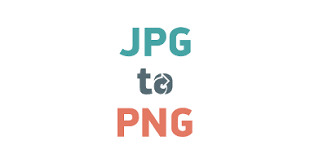What are JPG and PNG?
Introduction
In the digital age, where images play a significant role in communication, understanding different image formats is essential. Two of the most common image formats used across the web are JPG and PNG. While both serve similar purposes, they possess distinct characteristics that make them suitable for different scenarios. In this article, we’ll delve into the specifics of JPG and PNG formats, explore their differences, discuss the need for converting between the two, and provide insights into their respective use cases.
What are JPG and PNG?
JPG (or JPEG): Joint Photographic Experts Group, abbreviated as JPEG, is a widely used image format developed by the Joint Photographic Experts Group. JPG files are known for their efficient compression algorithms, making them ideal for storing digital photographs and images with complex color gradients. They support millions of colors and are commonly used for photographs, digital artwork, and web graphics.
PNG: Portable Network Graphics, abbreviated as Convert JPG to PNG online, is a raster graphics file format that supports lossless data compression. Developed as an improved alternative to GIF (Graphics Interchange Format), PNG files offer higher quality and better compression. They are particularly suitable for images with sharp edges, transparency, and textual content. PNG files are commonly used for logos, icons, illustrations, and graphics requiring transparency.
Differences between JPG and PNG
1. Compression Method
JPG: Utilizes lossy compression, meaning that some image data is discarded during compression to reduce file size. This results in some loss of image quality, particularly in areas with complex color gradients.
PNG: Uses lossless compression, preserving all image data without sacrificing quality. This makes PNG ideal for images that require high fidelity and crisp details.
2. Color Depth
JPG: Supports millions of colors (24-bit color depth), making it suitable for photographs and images with smooth color gradients.
PNG: Supports both 24-bit color depth (millions of colors) and 8-bit color depth (256 colors with transparency). This flexibility allows PNG to maintain image quality while offering transparency support.
3. Transparency
JPG: Does not support transparency. Any transparent areas in a JPG image are filled with a solid color, typically white.
PNG: Supports alpha channel transparency, allowing for transparent backgrounds and overlaying images on different backgrounds seamlessly. This makes PNG ideal for logos, icons, and graphics with transparent elements.
4. Compression Artefacts
JPG: May exhibit compression artefacts, such as pixelation and loss of detail, especially when heavily compressed. This can result in a degradation of image quality, particularly in areas with fine details or sharp edges.
PNG: Maintains image quality without introducing compression artefacts, even when heavily compressed. This ensures that PNG images retain their clarity and sharpness, making them suitable for high-quality graphics.
Need for Converting JPG to PNG
While both JPG and PNG formats have their advantages, there are situations where converting JPG to PNG may be necessary or beneficial:
1. Transparency Requirements
If an image needs to have transparent areas or a transparent background, converting it from JPG to PNG allows for the preservation of transparency.
2. Lossless Compression
When preserving image quality is paramount, converting JPG to PNG ensures that no additional loss of quality occurs during compression.
3. Editing and Retouching
For images that require further editing or retouching, converting them to PNG provides a higher quality base image with no loss of detail.
4. Compatibility with Graphic Design Software
Many graphic design and image editing software programs prefer PNG files for their support of transparency and lossless compression. Converting JPG images to PNG ensures compatibility with these software applications.
Conclusion
In summary, JPG and PNG are two widely used image formats, each with its own set of advantages and characteristics. While JPG is ideal for photographs and images with complex color gradients, PNG excels in preserving image quality, supporting transparency, and maintaining sharpness. Understanding the differences between these formats and knowing when to convert between them can enhance the quality and usability of digital images. Whether it’s preserving transparency, maintaining image quality, or ensuring compatibility with graphic design software, the choice between Transfer JPG to PNG ultimately depends on the specific requirements of each image.
FAQs
1. Can I convert a PNG image back to JPG?
- Yes, you can convert a PNG image back to JPG using various image editing software programs. However, it’s essential to note that converting from PNG to JPG may result in a loss of image quality due to the compression differences between the two formats.
2. Are there any other image formats besides JPG and PNG?
- Yes, there are several other image formats commonly used, including GIF (Graphics Interchange Format), TIFF (Tagged Image File Format), and BMP (Bitmap Image File). Each format has its own unique characteristics and use cases, depending on factors such as compression, color depth, and transparency support.
3. Which image format is best for web graphics and digital artwork?
- For web graphics and digital artwork requiring transparency and crisp details, PNG is often preferred. However, for photographs and images with smooth color gradients, JPG may be more suitable due to its efficient compression algorithms and support for millions of colors.
Read more article:- Theshaheen


